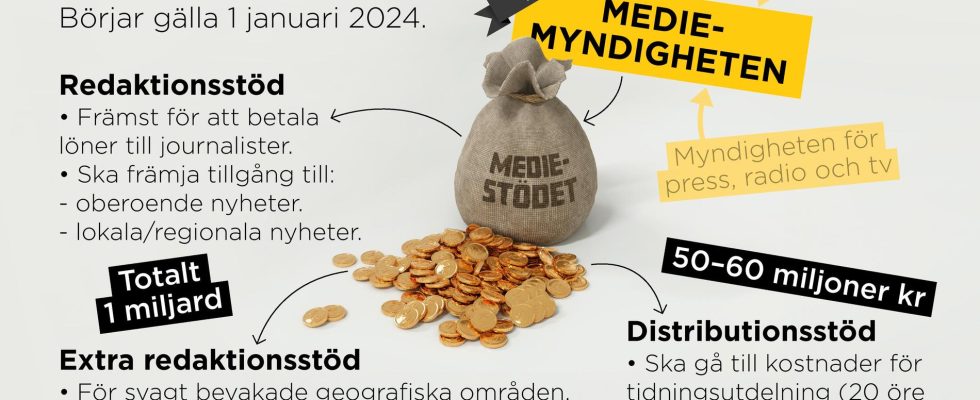Save the article
1 / 3Photo: Anders Humlebo
A billion kroner and the future of a large number of newspapers are at stake when the new media support is to be introduced from New Year. But there are still no laws or clear rules, and there is confusion in an already challenged industry.
– We are a little concerned that the rules are so unclear, says Nils Olauson, business area manager at the media group NTM.
Already from the turn of the year, it is intended that the new media support will come into effect. The money, which goes to newsrooms around the country, is in some cases absolutely crucial for newspapers and news sites at a time of razor-sharp competition for attention and a shrinking advertising market.
– It’s a big change, so it’s clear that it affects many newsrooms, says Kajsa Rohdin, head of unit at the Norwegian Press Radio and Television Authority.
But despite the fact that the new media support will soon be in place, the law has not even been approved in the Riksdag. It must then be approved by the EU Commission before it can enter into force.
Because time is so short, the authority chose to send out a draft of regulations already this summer – that is, how the law that does not yet exist should be interpreted – for referral to, among other media houses.
“Deep uncertainty”
The industry organization Tidningsutgivarna (TU) writes that the handling created “deep uncertainty and unpredictability” among the member companies.
– There are question marks. It is about the timetable and a concern that the introduction of the new model risks being delayed. And there are question marks regarding certain definitions and priorities of the support, says Bonnier News Thomas Matsson, who leads the working group for media support at TU.
Losers in the new system are probably more niche newspapers that are published on a national level, for example Dagen, a Christian-based newspaper, with 36 employees.
– It is probably to our disadvantage, unfortunately, says CEO and editor-in-chief Felicia Ferreira.
The newspaper received SEK 17.7 million in operating support this year. She expects significantly less money – if any – when the transition period is over. She says that there is uncertainty among the employees, but at the same time a fighting spirit.
What the consequences will be is uncertain, especially since so much is still unclear.
– We will have to adapt and make changes, but I am convinced that we will survive, she says.
The free newspapers winner
At NTM, where titles such as Upsala Nya Tidning and Norrländska Socialdemokraten are included, Nils Olauson is positive about the new media support and the focus on local and regional journalism, but also thinks that the uncertainty is problematic.
– It is a challenge that there is still so much that has not been clarified, from our perspective.
TU is also positive about the support’s new orientation. Thomas Mattsson also highlights that it focuses on original journalism and prioritizes small, local media.
– If you read all the referral responses, you can get the impression that there is a lot of criticism of the media support, but the aim is to point out the correct technical details. We are positive that it will be modernized, says Mattsson.
In the new support, companies seek money to cover salary costs for editorial staff – for example, reporters, editors and photographers. It doesn’t matter if it’s paper or a website, if it’s text, sound or image or if it’s free or paid services.
– Those who are the big winners are free newspapers, which have never before received press support, says Mattsson.
FACT The new media support
+ From the turn of the year, the media must be able to apply for the new media support from the equally new agency The Media Authority (which is formed by merging the Swedish Media, Radio and Television Authority and the Norwegian Media Council).
+ The aim is to “promote the public’s access to high-quality independent news reporting and promote access to local and regional news reporting throughout the country”.
+ The support of one billion kroner will primarily help pay journalist salaries in newsrooms. It does not matter whether it is text, sound or image, or newspaper, broadcast or web.
+ An extra bag of money in the editorial support is targeted for efforts in weakly monitored areas geographically, or for reporting in minority languages.
+ The distribution support is supposed to help cover the costs of distributing newspapers, but accounts for only a few percent of the support (50–60 million kroner).
+ The transitional support will help media that are currently supported to adapt to the new rules, until 2028.
Read more
